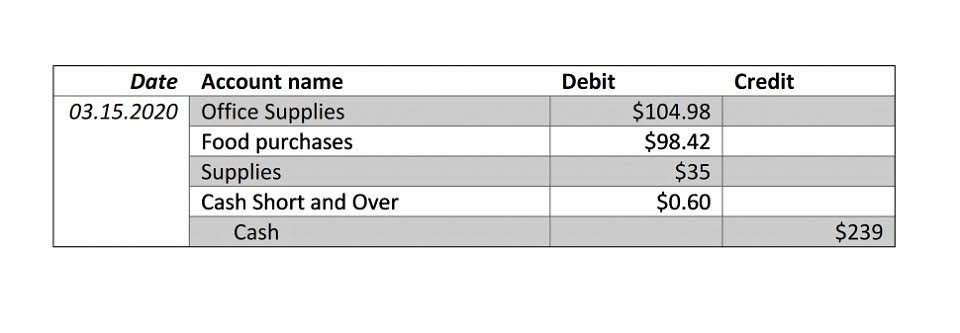
Where the percentage of sales method looks at sales, the percentage of receivables method looks at the current amount of accounts receivable the business has accumulated at its point of calculation. The resulting figure indicates what the allowance for the doubtful accounts balance should be. Management and external users use this method to analyze the performance of the company and identify key indicators of improvement or signs the company might be in trouble over time. For instance, creditors might compare interest expense to sales to identify whether the company is able to service its debt.
- The allowance method provides a systematic and GAAP-compliant approach to accounting for uncollectible accounts, ensuring that estimated losses are recognized in the appropriate periods.
- Under the allowance method, the Gem Merchandise Co. does not need to know specifically which customer will not pay, nor does it need to know the exact amount.
- The percentage of credit sales method is an income statement approach and estimates the required bad debt expense for an accounting period using a percentage of the credit sales made during the same period.
- However, if the situation has changed significantly, the company increases or decreases the percentage rate to reflect the changed condition.
- Management of XYZ Company meets on an annual basis to discuss the performance of the company and discuss the financial statement outlook.
Implement the Proportional Ratios of Line Items in the Forecasted Sales Figure
This method focuses on the income statement and its relationship normal balance to accounts receivable. The percentage of receivables method is a pivotal tool in accounting, serving as a gauge for estimating the amount of accounts receivable that may not be collected. Managing accounts receivable effectively is crucial for maintaining a company’s financial health. One of the key tools finance teams use to prepare for potential losses is the allowance for doubtful accounts (ADA). This reserve helps businesses anticipate uncollectible debts and maintain more accurate financial statements.
Authoritative Sources on GAAP and Uncollectible Accounts
For example, based on past experience, a company might make the assumption that accounts not past due have a 99% probability of being collected in full. Accounts that are 1-30 days past due have a 97% probability of being collected in full, and the accounts days past due have a 90% probability. The company estimates that accounts more than 60 days past due have only a 60% chance of being collected. With these probabilities of collection, the probability of not collecting is 1%, 3%, 10%, and 40% respectively.
The credit sales method

First, it records a “bad debt expense” that reduces the current period’s profit. Second, it creates a contra asset account called “allowance for doubtful accounts” that reduces the reported value of AR without changing the underlying customer balances. Under the Percent of Sales Budgeting for Nonprofits Method for tracking bad debts, credit sales (not cash sales) are multiplied by a percent to arrive at the estimate for bad debts. That percentage will be based on the company’s past experience with uncollectible accounts. Reviewing historical data of uncollectible accounts and the industry benchmark for bad debt expenses can work out the percentage needed for the forecast. The percentage of sales of estimating bad debts involves determining the percentage of total credit sales that is uncollectible.
To calculate your potential bad debts expense (BDE), simply multiply your total credit sales by the percentage you anticipate losing. When preparing a financial prediction using this method, businesses must prepare a plan and select the accounts the final projection must include. Some accounts that businesses may want to forecast include the accounts payable, inventory, accounts receivable, and COGS or cost of goods sold. The percentage of sales method refers to a financial forecasting model that enables a business to predict financial alterations based on spending accounts and past and current sales. Moreover, it can help organizations prepare a comprehensive financial outlook statement. Additionally, small businesses can benefit from a more hands-on approach to customer credit evaluation.
The HubSpot Customer Platform
- The unpaid accounts receivable that are written off are credited with a corresponding debit to the allowance account.
- The general guidelines and principles, standards and detailed rules, plus industry practices that exist for financial reporting.
- If the seller is a new company, it might calculate its bad debts expense by using an industry average until it develops its own experience rate.
- Allowance for doubtful accounts appears on your balance sheet right beneath your accounts receivable balance.
This works best when a company’s customer base and economic conditions stay relatively stable. My Accounting Course is a world-class educational resource developed by experts to simplify accounting, finance, & investment analysis topics, so students and professionals can learn and propel their careers. The break-even point is a major inflection point in every business and sales organization. In this article, we’ll discuss what the method is, how to use it, show an example, and illustrate some of its benefits.
- This is recorded as a debit to the bad debt expense account and a credit to the allowance for doubtful accounts.
- Integrating CRM data enrichment can significantly improve the accuracy of these forecasts by providing deeper insights into customer behavior and more precise sales projections.
- The percentage of receivables method is similar to the percentage of credit sales method, except that it looks at percentages over smaller time frames rather than a flat rate of BDE.
- While it offers a good starting point, it’s essential to use this method alongside other forecasting techniques.
- Let us look at the examples of the allowance method to understand the concept better.
What I Learned About Getting Revenue Forecasting Right, According to the Experts
- The percentage of sales method in accounting is used to estimate bad debt expense based on a percentage of credit sales.
- We’ll go through each step and then walk through an example to see the formula in action.
- Because of this, Larry’s Lumber makes an accounting entry for this $5,000, classifying it as a bad debt expense.
- Some sellers won’t offer terms such as 2/10, net 30 because of these high percentage equivalents.
- In applying the percentage-of-sales method, companies annually review the percentage of uncollectible accounts that resulted from the previous year’s sales.
- These efforts resulted in improved customer relationships and a 30% decrease in the hotel’s bad debt expense over the following year.
- When a specific account is identified as uncollectible, the Allowance for Doubtful Accounts should be debited and Accounts Receivable should be credited.
These findings are often further supported by one of seven financial forecasting methods that determine future income and growth rates. Adjusting entries may percent of sales method accounting be necessary at the end of each accounting period to reflect changes in the estimated uncollectible accounts. These adjustments ensure that the allowance for doubtful accounts accurately reflects the current estimate of uncollectibles.
However, at some later date, the balance in the allowance account must be reviewed and perhaps further adjusted, so that the balance sheet will report the correct net realizable value. If the seller is a new company, it might calculate its bad debts expense by using an industry average until it develops its own experience rate. While the percentage of receivables method is widely utilized, it is one of several techniques employed to estimate bad debt expenses. Each method offers a different approach to calculating the allowance for doubtful accounts, and the choice of method can significantly impact the financial statements.

Step #3 – Write The Balances Of Every Account And Their Percentage With Respect To The Revenue

A business would need to forecast the accounts receivable or credit sales using the available historical data. Understanding how quickly customers pay back credit sales over different periods, such as 30, 60, and 90 days, also helps. Under the accrual basis of accounting, expenses are matched with revenues on the income statement when the expenses expire or title has transferred to the buyer, rather than at the time when expenses are paid. The accounting method under which revenues are recognized on the income statement when they are earned (rather than when the cash is received). In this transaction, the debit to Accounts Receivable increases Malloy’s current assets, total assets, working capital, and stockholders’ (or owner’s) equity—all of which are reported on its balance sheet. The credit to Service Revenues will increase Malloy’s revenues and net income—both of which are reported on its income statement.